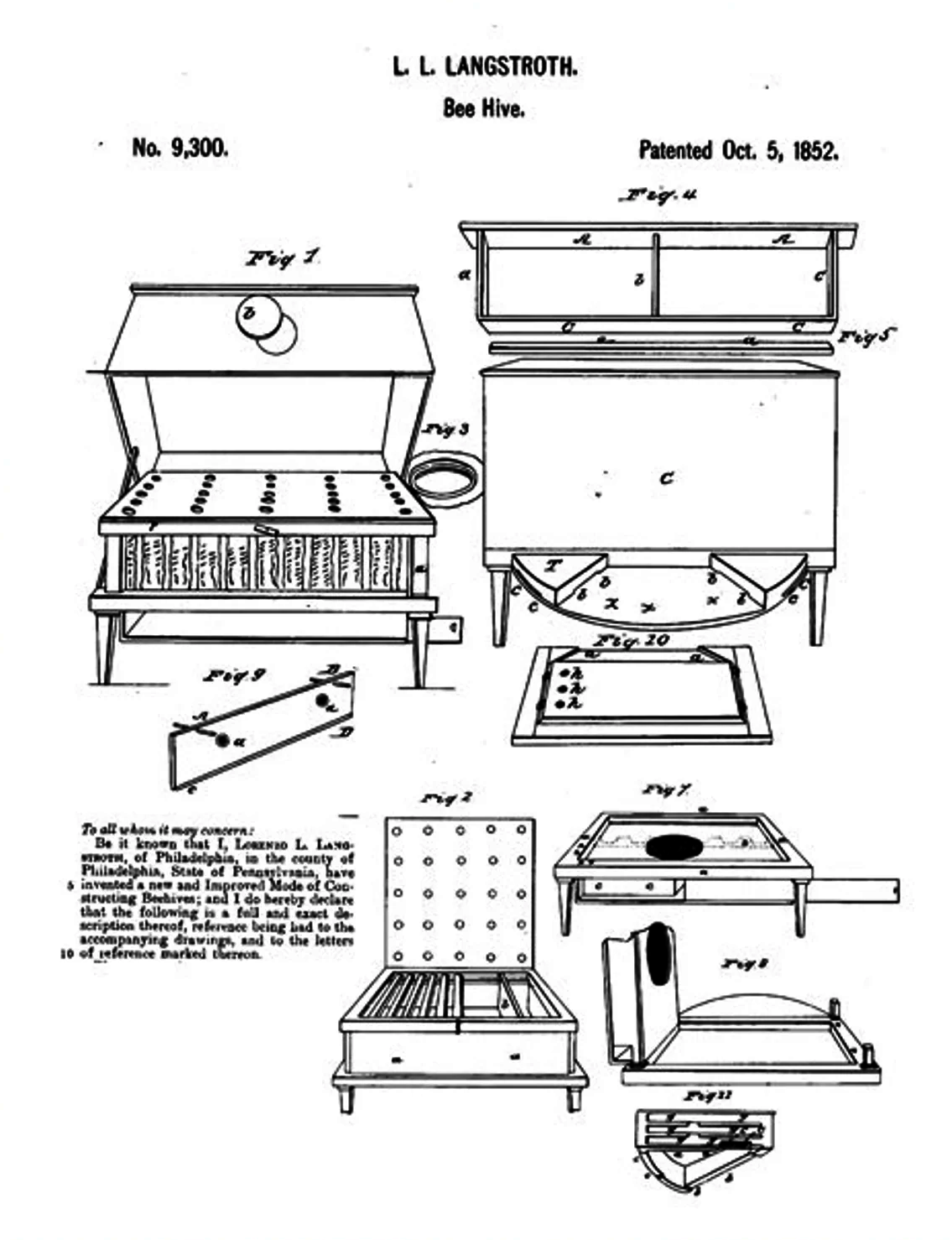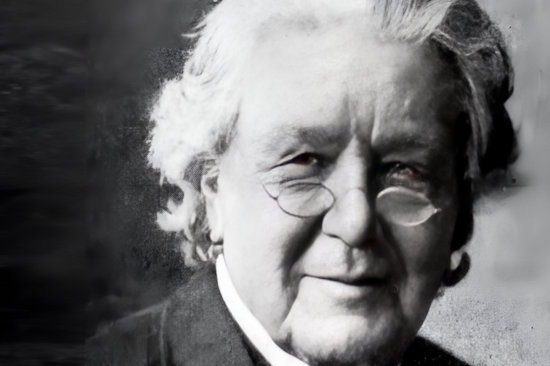Born: Christmas day (25 December) 1810, Philadelphia, Pennsylvania, United States
Died: 6 October 1895 (age 84)
Education: Yale University (1831)
Nationality: American
Best know as the inventor of the Langstroth hive. Langstroth filed for the US patent of his design in January 1852 and it was granted in October of that year.
The patent design (shown below) looks very different from the Langstroth hive as we know it today. The design has a portico entrance, a single removable honey box with the same frame size as the brood box and a hinged roof (Queen excluders were not invented until 1865 by Abbe Collins). Modern Langstroth hives also have different dimensions. However it was this hive design by Langstroth that ushered in the top opening moveable frame hive and the majority of hives in use today are based directly or indirectly upon his design and its understanding of what we now call beespace.
The first known use of the term 'beespace' is not actually to be found until sometime later when its first recorded use was by a James Heddon in 1885 when he used the term in his description for the parts used in his own patent application for another hive design.
Despite the Langstroth hive being the most commonly used hive type in the world today, Langstroth himself never received any royalties from his patented design, mainly because it was too easy to copy the idea used in the internal layout without including any of the other parts. In this way his patent was widely infringed and his attempts to defend the patent all proved unsuccessful.


